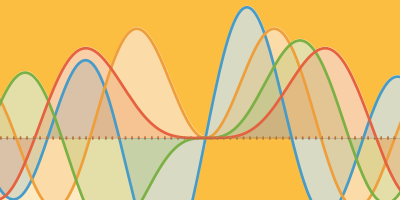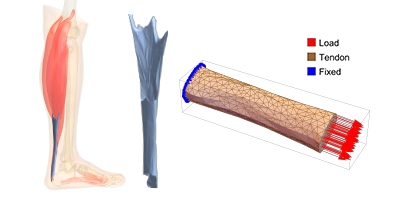Analyzing Semaglutide’s Biochemistry with Wolfram Language

Note: This blog is not meant to act as medical advice. Please consult your doctor to determine whether semaglutide is right for you.
Semaglutide is the active ingredient in a couple of popular anti-obesity medications. It is a glucagon-like peptide-1 (GLP-1) receptor agonist that mimics the action of our naturally occurring GLP-1 hormone. Semaglutide is 94% similar in structure to our natural GLP-1 hormone, and it works similarly to lower blood glucose and regulate appetite.
When injected into the fatty tissue under the skin, semaglutide binds to and activates the GLP-1 receptors present in several areas of the body. While the primary binding occurs in the bloodstream with albumin (the most abundant protein in blood plasma), semaglutide’s action takes place in multiple locations throughout the body where GLP-1 receptors are present, including the:
- Pancreas, increasing the amount of insulin that our pancreas releases in response to food
- Gastrointestinal tract, slowing gastric emptying and promoting satiety (fullness)
- Brain, regulating our appetite and reducing the desire to eat more
Together, all of this helps control blood glucose levels, suppress appetite, lower calorie intake and promote weight loss.
 Engage with the code in this post by downloading the Wolfram Notebook
Engage with the code in this post by downloading the Wolfram Notebook
Breaking Down the Semaglutide Molecule
Semaglutide is a 31-amino-acid polypeptide with modifications for greater stability and an extended half-life:

![Molecule [semaglutideSMILES] Molecule [semaglutideSMILES]](https://content.wolfram.com/sites/39/2025/05/gw052125img6.png)
![MoleculePlot [semaglutideSMILES] MoleculePlot [semaglutideSMILES]](https://content.wolfram.com/sites/39/2025/05/gw052125img7.png)
Taking a Weekly Dosage of Semaglutide
Semaglutide has a long half-life (about one week) because it is more than 99% bound to plasma albumin and protected from metabolic breakdown. Therefore, it can be administered as a weekly subcutaneous injection. The typical weekly dose of semaglutide for weight management is 2.4 mg. Use ChemicalInstance to get the number of semaglutide molecules in each dose:
![ChemicalInstance[Molecule[semaglutideSMILES], 2.4 milligrams], Quantity ChemicalInstance[Molecule[semaglutideSMILES], 2.4 milligrams], Quantity](https://content.wolfram.com/sites/39/2025/05/gw05232025img1.png)
The Structure of Semaglutide versus Native GLP-1 Receptors
Semaglutide is chain E in the biomolecule with the Protein Data Bank ID 7KI0. Let’s visualize the experimental structure of the full complex and then just the semaglutide.
The Full Complex
Here is the full complex:


Semaglutide is distinguished by three modifications from native human GLP-1, including a C18 fatty diacid. The diacid increases albumin binding and extends semaglutide’s half-life, allowing for once-weekly dosing. This long diacid side chain is present in the 2D molecule, but not in BioMoleculePlot3D because the atom positions were not resolved.
Get the amino acid sequence of each chain:

The Semaglutide Structure
Chain E represents the bio sequence with 30 amino acids of semaglutide:


Native GLP-1 Versus Semaglutide
According to the RCSB Protein Data Bank:
- Semaglutide shares a 94% structural homology with native human GLP-1.
- Semaglutide is distinguished from native GLP-1 by three modifications.
Visualize a complex containing native GLP-1 to verify the differences from semaglutide:



Chain E is the native GLP-1. Compare the bio sequences for native GLP and semaglutide:


The differences can also be viewed using the Diff function:


Examine the structural differences in the amino acid sequences where residues are color coded based on their amino acids:

Next, examine the overlap between the two sequences. We can confirm that it is ~94%:
The GLP-1 Receptor
Highlight just the GLP-1 receptor and semaglutide. Most of the gray chains (except chain D) are guanine nucleotide-binding proteins:

The "GaussianSurface" PlotTheme helps us better understand the binding pocket of the receptor:

Assessing Semaglutide’s Impact on Blood Glucose
It is important to remember the role of semaglutide in blood glucose control, not just weight loss. When glucose circulates in the blood, it can attach to hemoglobin, forming glycated hemoglobin, or hemoglobin A1c (HbA1c). The higher the blood sugar levels, the more glucose binds to hemoglobin, which results in a higher HbA1c level.
HbA1c indicates a person’s average glucose level over the past two to three months. It is useful in diabetes management to assess someone’s blood sugar over time and determine if a treatment plan is working. The American Diabetes Association (ADA) suggests a maximum HbA1C of 7% for nonpregnant adults with diabetes. This is a general guideline. The healthcare provider determines the HbA1c goal appropriate for each individual.
To help people better understand their HbA1C lab results, the ADA recommends the use of estimated average glucose (eAG) because it is expressed in the same units as home glucose readings (mg/dL). FormulaData includes a formula to convert HbA1c values into eAG (or mean plasma glucose) values:

Here is a function to convert HbA1c values of 5.3%, 7.0% and 8.5%:

Weight Assessment
Body mass index (BMI) is a simple and popular calculation because it requires only height and weight:

But BMI cannot be applied to all individuals since it does not account for body composition or fat location. An athlete may have a high BMI but low body fat. A person with little muscle may have a normal BMI, but also a high amount of visceral fat in the central abdomen, which surrounds the internal organs and poses a greater risk. BMI can be useful in population studies of general trends in weight status.
As an alternative, waist-to-hip ratio (WHR) measures the distribution of body fat, particularly how fat is distributed around the waist compared to the hips. WHR focuses on fat around the abdomen, which is more strongly associated with heart disease, diabetes and other metabolic issues:
![FormulaData ["WaistToHipRatio", "QuantityVariableTable"] FormulaData ["WaistToHipRatio"](https://content.wolfram.com/sites/39/2025/05/gw052125img30.png)
Here is a function to calculate and interpret WHR. The first argument is the waist measurement, the second argument is the hip measurement and the third argument is "male" or "female":

Do not specify units for the measurements. They can be any unit of measurement as long as they are both the same. In the first example, the arguments are expressed as inches, and in the second, as centimeters:


Conclusion
High-profile successes and persistent advertising of GLP-1 medications for obesity have generated excitement among consumers and spurred rapid innovation by scientists, with more obesity medications in the development pipeline. Still, long-term glucose control and weight management are best achieved with a comprehensive approach—one that includes healthy, nutrient-dense foods and regular physical activity. The authors found the US National Library of Medicine and the Protein Data Bank and its PDB-101 resource helpful in researching semaglutide for this post.
| Visit Wolfram Community or the Wolfram Function Repository to embark on your own computational adventures! |



Comments